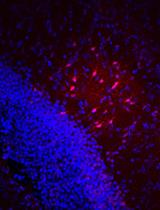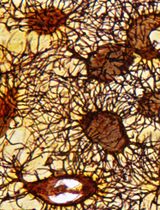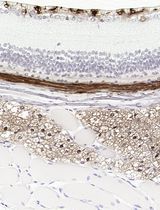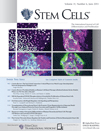- Submit a Protocol
- Receive Our Alerts
- Log in
- /
- Sign up
- My Bio Page
- Edit My Profile
- Change Password
- Log Out
- EN
- EN - English
- CN - 中文
- Protocols
- Articles and Issues
- For Authors
- About
- Become a Reviewer
- EN - English
- CN - 中文
- Home
- Protocols
- Articles and Issues
- For Authors
- About
- Become a Reviewer
Alkaline Phosphatase Staining
Published: Vol 4, Iss 5, Mar 5, 2014 DOI: 10.21769/BioProtoc.1060 Views: 30762
Reviewed by: Anonymous reviewer(s)

Protocol Collections
Comprehensive collections of detailed, peer-reviewed protocols focusing on specific topics
Related protocols

Visualization of Gap Junction–Mediated Astrocyte Coupling in Acute Mouse Brain Slices
Nine F. Kompier [...] Fritz G. Rathjen
Feb 20, 2025 2158 Views

A Novel Optimized Silver Nitrate Staining Method for Visualizing and Quantifying the Osteocyte Lacuno-Canalicular System (LCS)
Jinlian Wu [...] Libo Wang
Apr 20, 2025 1442 Views

Improved Immunohistochemistry of Mouse Eye Sections Using Davidson's Fixative and Melanin Bleaching
Anne Nathalie Longakit [...] Catherine D. Van Raamsdonk
Nov 20, 2025 1474 Views
Abstract
Two main features characterize pluripotent cells; self-renewal (unlimited cell division) and the ability to give rise to all cells of the adult organism. Given the recent impact of induced pluripotent stem cells (iPSCs) and ongoing use of pluripotent embryonic stem cells ESCs (ESCs) in basic discovery, drug development, and potential use for stem cell therapy and regenerative medicine, methods to definitively distinguish pluripotent cells from their differentiated derivatives are required. This will allow us to better understand the factors that promote their survival, self-renewal, and lineage-specific differentiation.
Undifferentiated embryonic stem cells (ESCs) and induced pluripotent stem cells (iPSCs) may be identified through the use of biomarker and functional assays. Biomarker assays include those for transcript and protein expression of important pluripotency transcription factors (OCT4, SOX2, and NANOG), cell surface markers (SSEA-1, -3, and -4; TRA-1-60, TRA-1-81), and Alkaline Phosphatase (AP) activity (Brambrink et.al., 2008; Ginis et al., 2004). Functional assays include: (1) the ability to generate teratomas consisting of cells from all three germ layers (endoderm, ectoderm, and mesoderm) when transplanted into immunodeficient mice or upon in vitro differentiation; (2) the ability to generate a chimera; and (3) germline transmission (Marti et al., 2013; Buehr et al., 2008). The latter two tests are ethically feasible only for mouse and other non-human pluripotent cells.
In this protocol (Campbell and Rudnicki, 2013) we describe a rapid method to screen for pluripotent cells by AP activity. AP, also known as Basic Phosphatase catalyzes the dephosphorylation of many molecules including nucleotides and proteins. AP activity is high in pluripotent cells but is greatly decreased in more differentiated cell types. The technique described herein may be used to enumerate pluripotent cells during differentiation in the presence or absence of specific genetic manipulations or small chemical modulators. It may also be used to monitor induced pluripotency using defined factors from more differentiated cell types.
Materials and Reagents
- Mouse ESCs (mESCs)
- 0.1% gelatin (Sigma-Aldrich, catalog number: G1393 )
- Murine embryonic fibroblast (MEF) feeder cells
- Alkaline Phosphatase Staining Kit (Stemgent, catalog number: 00-0009 )
- Fixation Solution
- AP Staining Solution A
- AP Staining Solution B
- Fixation Solution
- 1x PBS (see Recipes)
- 1x PBS-T (see Recipes)
- 1x PBS-glycerol (see Recipes)
Equipment
- 6-well plate or 24-well plate
- Aluminum foil
- Light microscope with 10x objective
Procedure
- Cell Culture
- Coat plates with 0.1% gelatin. Warm gelatin to 37 °C. For each well of a 6 well plate, asceptically add 1.5 ml of 0.1% gelatin. Incubate the plates in the tissue culture hood at room temperature for 30 min. Aspirate off the gelatin and allow to dry for 10 min prior to adding media and plating cells.
- Seed each well with 4.75 x 105 murine embryonic feeder cells (MEFs) in 2 ml of media. Allow the MEFs to attach overnight prior to plating out the mouse ESCs.
- Passage actively dividing cells and culture for 3-5 days to a subconfluent density prior to staining. For mouse ESCs (mESCs) approximately 1 x 105 cells are plated to each well of a 6-well plate (or 1 x 104 cells for 24-well plate) that has been previously coated with 0.1% gelatin and plated with murine embryonic fibroblast (MEF) feeder cells.
- Coat plates with 0.1% gelatin. Warm gelatin to 37 °C. For each well of a 6 well plate, asceptically add 1.5 ml of 0.1% gelatin. Incubate the plates in the tissue culture hood at room temperature for 30 min. Aspirate off the gelatin and allow to dry for 10 min prior to adding media and plating cells.
- Alkaline Phosphatase Staining
- Aspirate the culture media from each well and rinse with 1x PBS-T.
- Aspirate the rinse solution and fix the cells with Fixation Solution at room temperature for two minutes. Use a sufficient volume to endure complete coverage of the cells. This would be 500 µl for each well of 24-well plate or 2 ml for each well of a 6-well plate. It is important not to exceed the fixation time of two min. Over fixation will result in the loss of AP activity and inaccurate results.
- Aspirate the Fixation Solution and rinse with 1x PBS-T. The wells should not be allowed to dry out.
- Prepare the Staining Solution by Mixing Solution A and Solution B at a 1:1 ratio. To ensure that there is sufficient volume for staining, prepare (n+1) y volumes of the solution where n is the number of wells, and y is the volume per well. For a 24-well plate y = 500 µl. For a 6-well plate y = 2 ml. The staining solution should be freshly prepared and used within five minutes of preparation.
- Aspirate the 1x PBS-T and pipet on the prepared Staining Solution. Cover the plate with aluminum foil in the dark for approximately 15 min. Monitor the color change (pluripotent cells will stain red/purple, MEFs will remain colorless) to avoid non-specific staining.
- Remove the staining solution by aspiration and wash the cells two times with 1x PBS. Do not use 1x PBS-T as this may wash out the stain.
- Aspirate the 1x PBS. Add 1x PBS-glycerol for long-term storage at 4 °C.
- Aspirate the culture media from each well and rinse with 1x PBS-T.
- Enumeration of Pluripotent Cells
- Count the number of AP stained (red/purple) pluripotent colonies and the differentiated (clear) colonies by eye or using a light microscope with 10x objective. The MEF feeder cells will remain clear.
Recipes
- 1x PBS (for 1 L)
800 ml MilliQ H2O
8 g NaCl
0.2 g KCl
1.44 g Na2PO4
0.24 g KH2PO4
Adjust the pH to 7.4 with HCl
Add MilliQ H2O to a final volume of 1 L
Filter sterilize and stored at 4 °C until use
- 1x PBS-T (1 L)
800 ml MilliQ H2O
8 g NaCl
0.2 g KCl
1.44 g Na2PO4
0.24 g KH2PO4
500 µl Tween-20
Adjust the pH to 7.4 with HCl
Add MilliQ H2O to a final volume of 1 L
Filter sterilize and stored at 4 °C until use
- 1x PBS-Glycerol (1 L)
500 ml MilliQ H2O
8 g NaCl
0.2 g KCl
1.44 g Na2PO4
0.24 g KH2PO4
200 ml Glycerol
Adjust the pH to 7.4 with HCl
Add MilliQ H2O to a final volume of 1 L
Filter sterilize and stored at 4 °C until use
Acknowledgments
This work was supported by grants from Genome Canada, the Ontario Genomics Institute, the Stem Cell Network, and the Canadian Institutes of Health Research.
References
- Brambrink, T., Foreman, R., Welstead, G. G., Lengner, C. J., Wernig, M., Suh, H. and Jaenisch, R. (2008). Sequential expression of pluripotency markers during direct reprogramming of mouse somatic cells. Cell Stem Cell 2(2): 151-159.
- Buehr, M., Meek, S., Blair, K., Yang, J., Ure, J., Silva, J., McLay, R., Hall, J., Ying, Q. L. and Smith, A. (2008). Capture of authentic embryonic stem cells from rat blastocysts. Cell 135(7): 1287-1298.
- Campbell, P. A. and Rudnicki, M. A. (2013). Oct4 interaction with Hmgb2 regulates Akt signaling and pluripotency. Stem Cells 31(6): 1107-1120.
- Ginis, I., Luo, Y., Miura, T., Thies, S., Brandenberger, R., Gerecht-Nir, S., Amit, M., Hoke, A., Carpenter, M. K., Itskovitz-Eldor, J. and Rao, M. S. (2004). Differences between human and mouse embryonic stem cells. Dev Biol 269(2): 360-380.
- Marti, M., Mulero, L., Pardo, C., Morera, C., Carrio, M., Laricchia-Robbio, L., Esteban, C. R. and Izpisua Belmonte, J. C. (2013). Characterization of pluripotent stem cells. Nat Protoc 8(2): 223-253.
Article Information
Copyright
© 2014 The Authors; exclusive licensee Bio-protocol LLC.
How to cite
Campbell, P. A. (2014). Alkaline Phosphatase Staining . Bio-protocol 4(5): e1060. DOI: 10.21769/BioProtoc.1060.
Category
Stem Cell > Embryonic stem cell > Cell staining
Cell Biology > Cell staining > Whole cell
Do you have any questions about this protocol?
Post your question to gather feedback from the community. We will also invite the authors of this article to respond.
Share
Bluesky
X
Copy link








